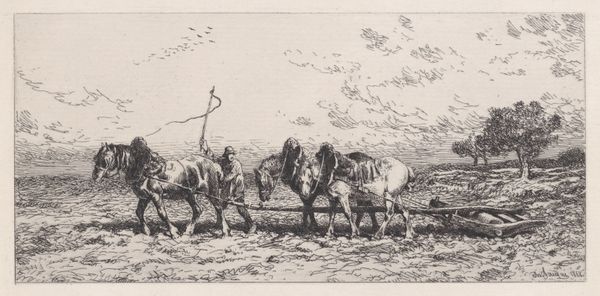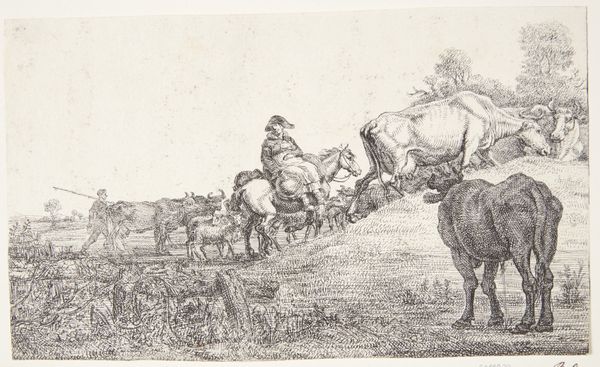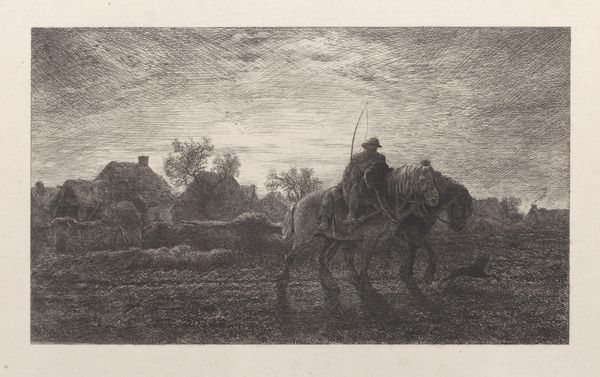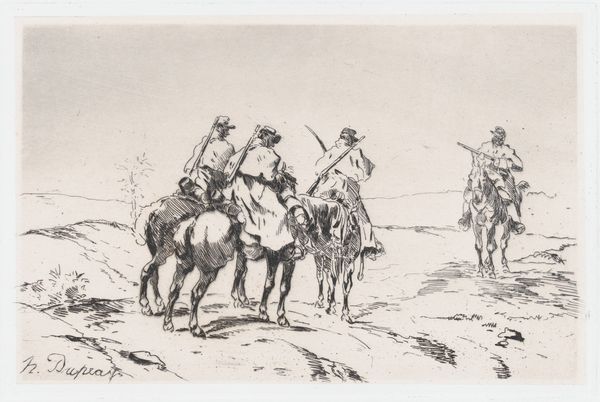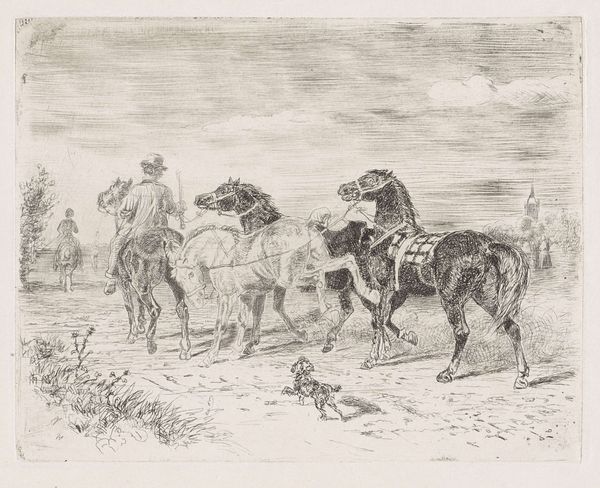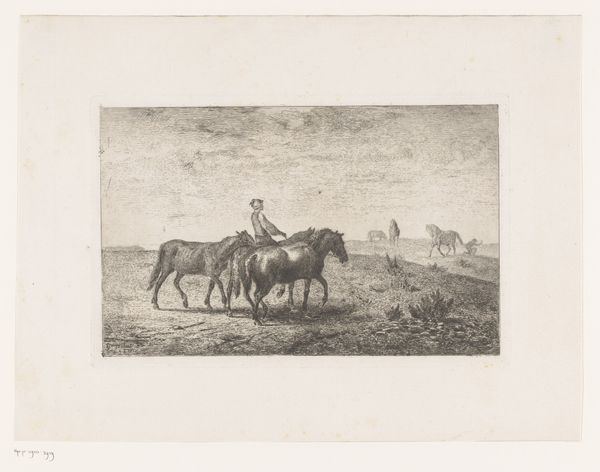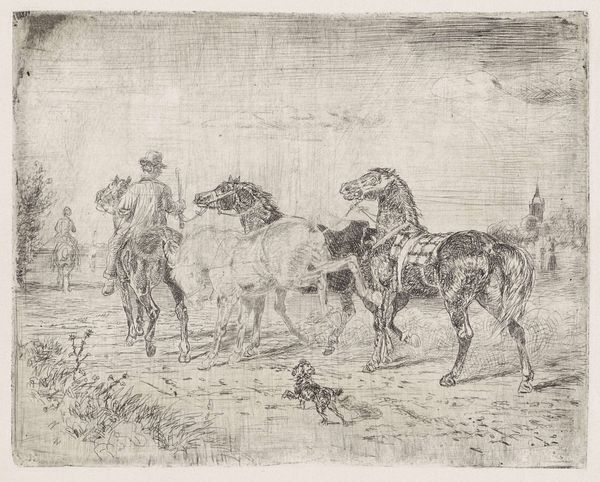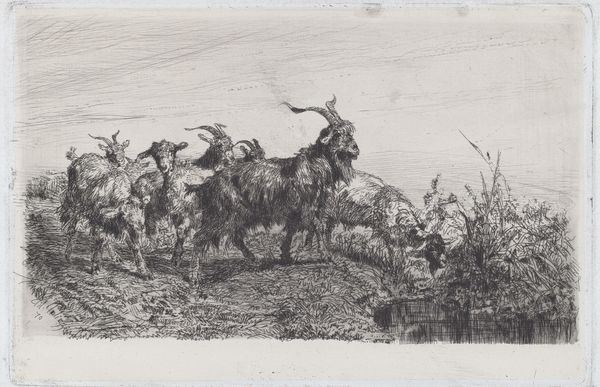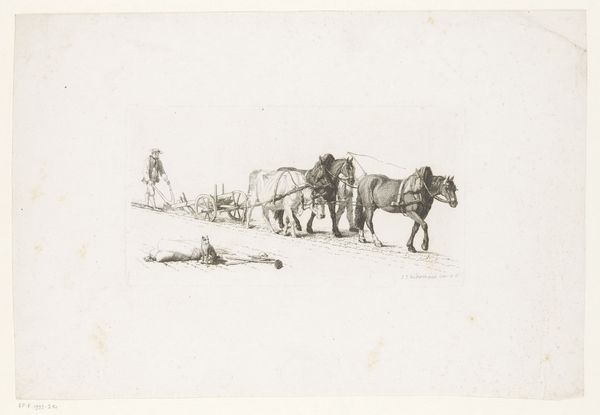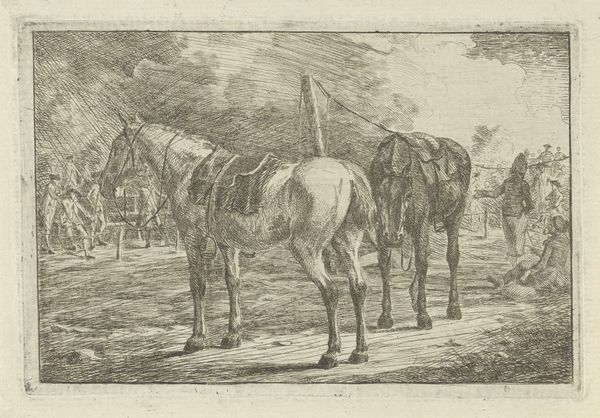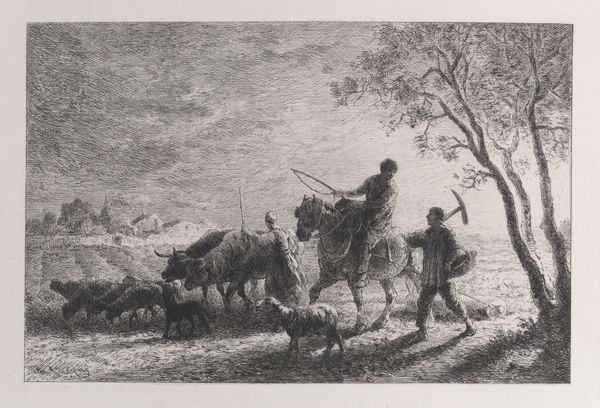
drawing, print, etching
#
drawing
# print
#
etching
#
pencil sketch
#
landscape
#
form
#
pencil drawing
#
pen-ink sketch
#
horse
#
men
#
line
#
genre-painting
#
realism
Dimensions: Sheet: 13 3/8 × 18 7/8 in. (34 × 48 cm) Plate: 8 7/16 × 10 5/8 in. (21.5 × 27 cm)
Copyright: Public Domain
Editor: This is "Plowing," an etching by Charles Jacque from 1864, currently residing at The Met. The detail is astonishing, especially considering it's a print. What jumps out at me is the sheer labor involved – you can almost feel the weight of the plow. How do you interpret this work? Curator: From a materialist perspective, it's fascinating to consider the process and social context. Jacque, known for his rural scenes, presents us with the means of production itself. Think about the labor etched into the plate: the artisan's hand mimicking the farmer's, both engaged in repetitive, physically demanding tasks. Where does high art begin, and the 'low' craft of agriculture end? Editor: So, you're saying the act of creating the etching mirrors the work being depicted? Curator: Precisely. And consider the materials: the paper, the ink, the metal plate – all commodities in their own right, entering into a cycle of production and consumption. What impact do you think the industrial revolution had on artists focusing on rural imagery? Editor: Maybe a longing for a simpler, pre-industrial past, even while using industrial methods to portray it. The irony isn't lost, is it? Curator: Not at all. Jacque is participating in a nostalgia, but also documenting a way of life increasingly affected by industrial advancements. It's the tension between tradition and progress, captured in the very materiality of the print. We're consuming an image *of* labor, fabricated *through* labor, and circulating within a growing market economy. Editor: That gives me a lot to consider. I initially saw a straightforward depiction of rural life, but understanding the materials and processes opens up a much richer interpretation. Thanks! Curator: Indeed. By focusing on the material conditions of artmaking, we uncover deeper meanings embedded in seemingly simple images. I appreciate your insights as well.
Comments
No comments
Be the first to comment and join the conversation on the ultimate creative platform.
